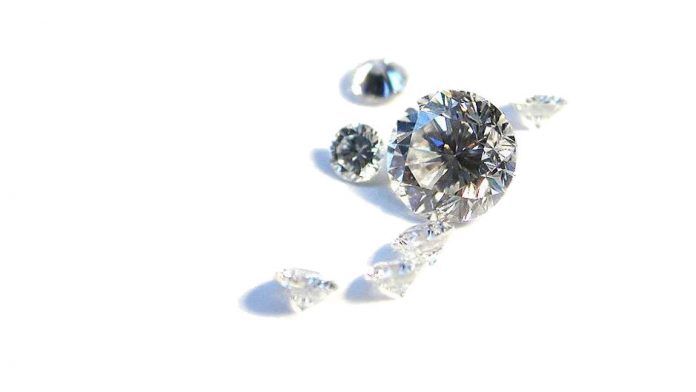Next time a brilliant sparkle of light from a diamond catches your eye, think about how it might capture a glimmer on the surface of the ocean water from which it may have formed.
New evidence suggests that ancient ocean water may have played a key role in the formation of diamonds by providing a highly reactive solution in which to crystallize. This work, co-authored by Professor Graham Pearson at the University of Alberta, was published last week in Nature.
It is well known that diamonds form under high temperature and pressure, about 150 km underground. These special conditions force the carbon atoms that form diamonds to bond to four other neighbouring carbon atoms, making a very dense and strong crystal.
On the other hand the graphite that makes up your pencil lead is also made of carbon, but each carbon atom is only bound to three other carbon atoms. This structure results in strong flat planes that can easily be cleaved apart, allowing graphite to easily leave a mark on paper.
Diamond (left) and graphite (right) are both allotropes of carbon, but with differing crystal structures. Image: Materialscientist (CC BY-SA 3.0).
Synthetic man-made diamonds can be made in the lab from graphite, but high temperature and pressure are not the only requirements; metal catalysts are also needed in these commercial processes, but there is no trace of them in diamonds found in nature.
It is impossible to directly observe how diamonds form. The diamonds we mine formed millions, or even billions of years ago, forced towards the Earth’s surface by volcanic activity. This leaves the details of their formation as a bit of a mystery.
Instead, researchers have to rely on indirect evidence. This is where ugly diamonds come in handy.
Eleven tiny flawed diamonds from the Ekati mine in the Northwest Territories were used in the study. The so-called ugly diamonds are nowhere near gem quality: many pockets of liquid are trapped inside that give them a cloudy appearance. However, this liquid likely represents the liquid in which the diamonds form, locked inside a rock-solid diamond time capsule.
The diamonds were vaporized by lasers to access the liquid, which was found to be rich in sodium, potassium and chlorine: the elements that make up the salt dissolved in ocean water. The patterns of entrapped strontium isotopes was also consistent with levels that would have been found in the ocean around the time that these diamonds were formed.
This salty solution is highly reactive, and may have helped diamond formation get started. These results suggest that ocean water may have been carried underground with the movement of tectonic plates, as an ocean plate subducted, or pushed under, the current mine site. Once there, the salt water would have come in contact with carbon-containing deposits in the Earth’s mantle, allowing diamonds to crystallize.
Whether all diamonds form in a similar way is also under debate, but gem-quality diamonds may result from the metamorphosis of lower quality diamonds. The cloudy shell of diamond that often surrounds a gem-quality core suggests that this may be the case.
Gem quality diamonds are often surrounded by a flawed diamond shell. Photo: James St. John (CC BY 2.0).
These results may assist in the future discovery of diamond-rich deposits. It also helps to explain how carbon and water cycle between the atmosphere and the Earth.







































